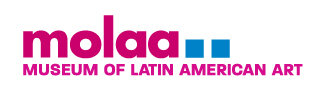This special edition of the MOLAA Zoom Project series focuses on the PST Art and Science Exhibition: Arteônica* Art, Science, and Technology in Latin America today. In each chapter, in a conversation between the most remarkable artists from Latin America and Latinxs in the US, and our MOLAA Chief Curator Gabriela Urtiaga, we place the focus on a series or specific artwork that requires a close inspection and deliberate process of contemplation, and exploration; delving into the ideas surrounding the creation of the works, their sources of research and inspiration, to immerse ourselves in the world of the artists. This special edition of the MOLAA Zoom Project series focuses on the PST Art and Science Exhibition: Arteônica* Art, Science, and Technology in Latin America today.
This session will be in Spanish with live English translation.
Francesco Mariotti
Francesco Mariotti is a Swiss artist and pioneer in art and technology, interested in the relationship between social processes, natural phenomena and technological tools. Mariotti was born in Bern in 1943 and moved to Peru in 1952. From 1965 to 1968 he studied at the Hamburg Academy of Fine Arts. After graduating, he participated in the 4th Documenta in Kassel (1968) and in the X São Paulo Biennial, representing Switzerland (1969). He returned to Peru in the early 1970s, where he developed various experimental social and participatory projects, such as Contacta (Lima, 1971 and 1972), the Inkari Festivals (Cuzco, 1972-1974), the Huayco EPS Collective (Lima, 1980-1981) - with Mariotti's partner, the artist and cultural practitioner María Luy - as well as his work with SINAMOS (National Social Mobilization Support System - a government agency) in the Peruvian highlands (Cuzco, Puno). In 1981 they moved back to Switzerland, where Mariotti first worked at the Locarno VideoArt Festival, where he became secretary general. In 1987 they moved to Zurich, where Mariotti began a systematic work linked to the creation of light and kinetic sculptures, also known as technosculptures or "techno-zoomorphic" sculptures, metallic structures linked to nature, to which circuits, sensors and computers are added, generating a bricolage that creates the perception of a living creature (some recite poetry, others speak, etc.). Since the late 1990s, his work has established a dialogue with nature, from Andean and Amazonian oral traditions and myths to the confrontation with complex processes such as climate change and ecology, producing "hybrid and quantum gardens". His interest in developing the concept of the hybrid, as well as his systematic study of the firefly, has led Mariotti to extend the binomial technology and nature towards recycling as a medium for art, developing renaturalisation projects in collaboration with scientists and activists. In recent years, he has been working on environmental and human rights issues through the construction of "firefly memorials", conceived as homages to environmental activists. The Mariotti-Luy Archive is the nucleus for the documentation and contextualisation of the different moments of the artistic and cultural production of Francesco Mariotti and María Luy over almost six decades, strongly influenced by their time in Peru, and is currently housed in the Museo de Arte de Lima.



